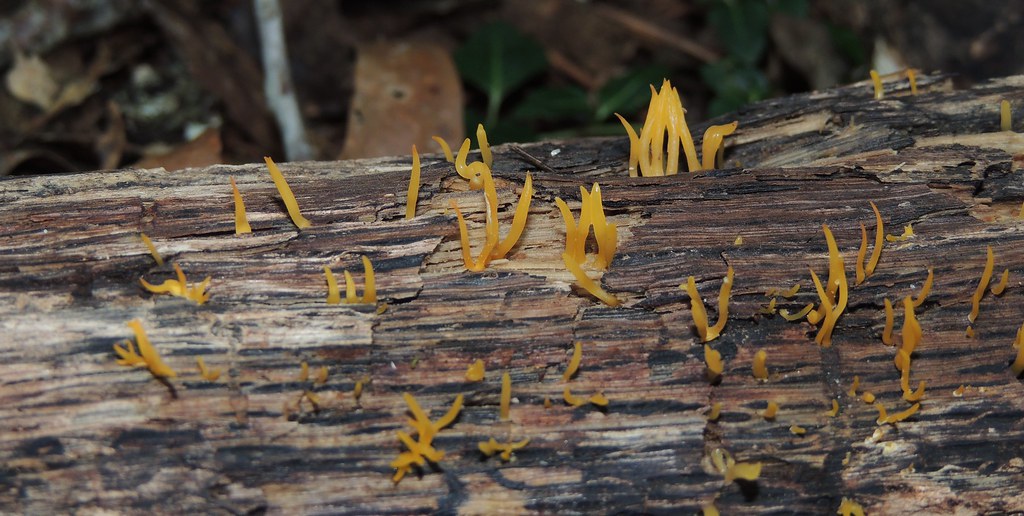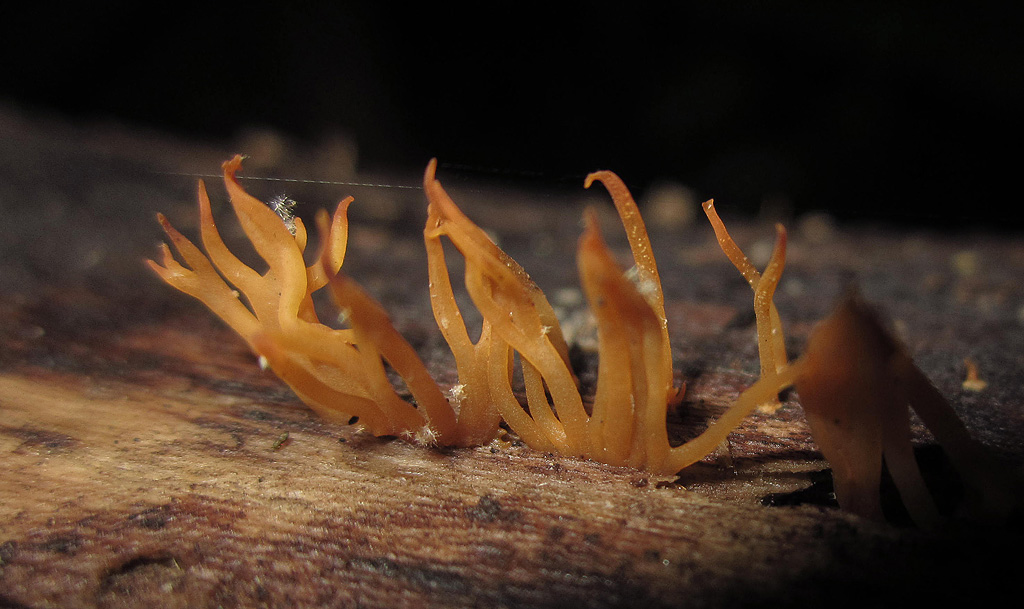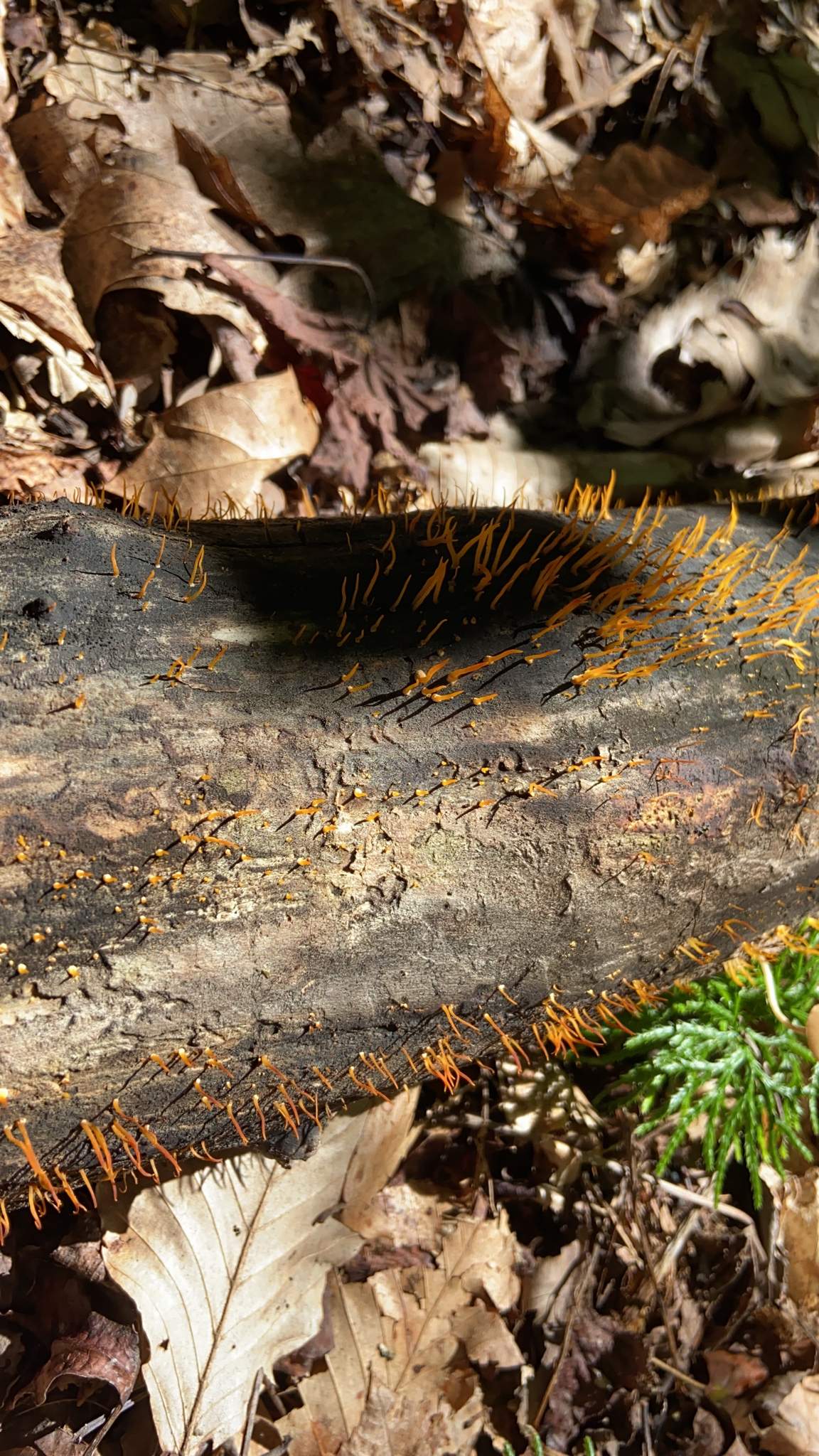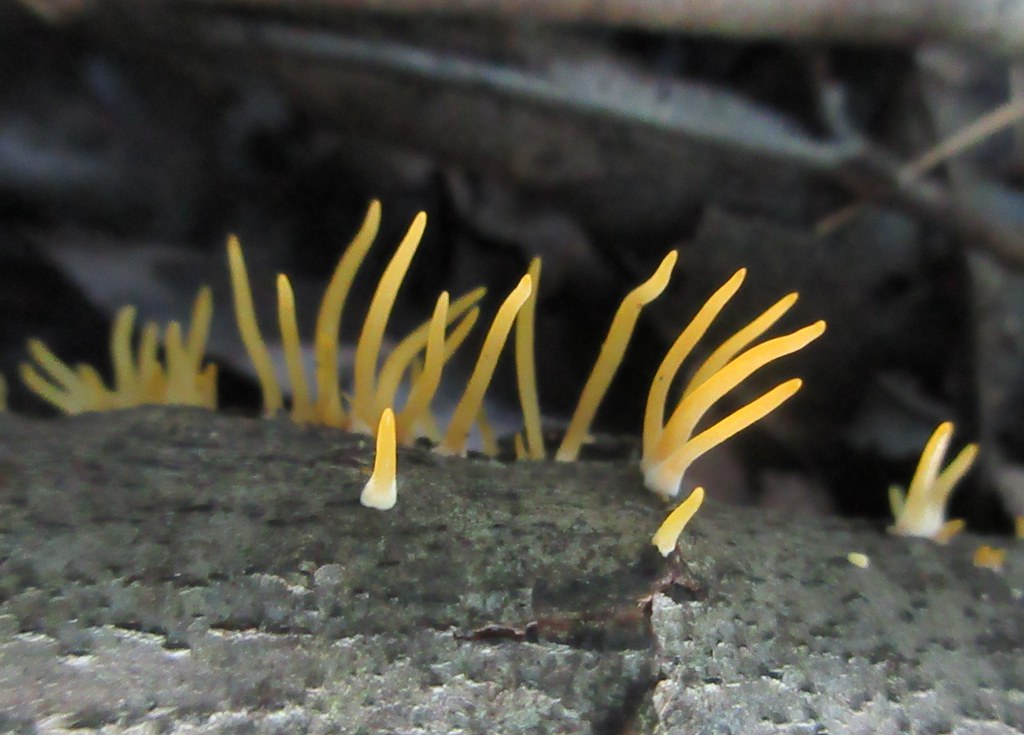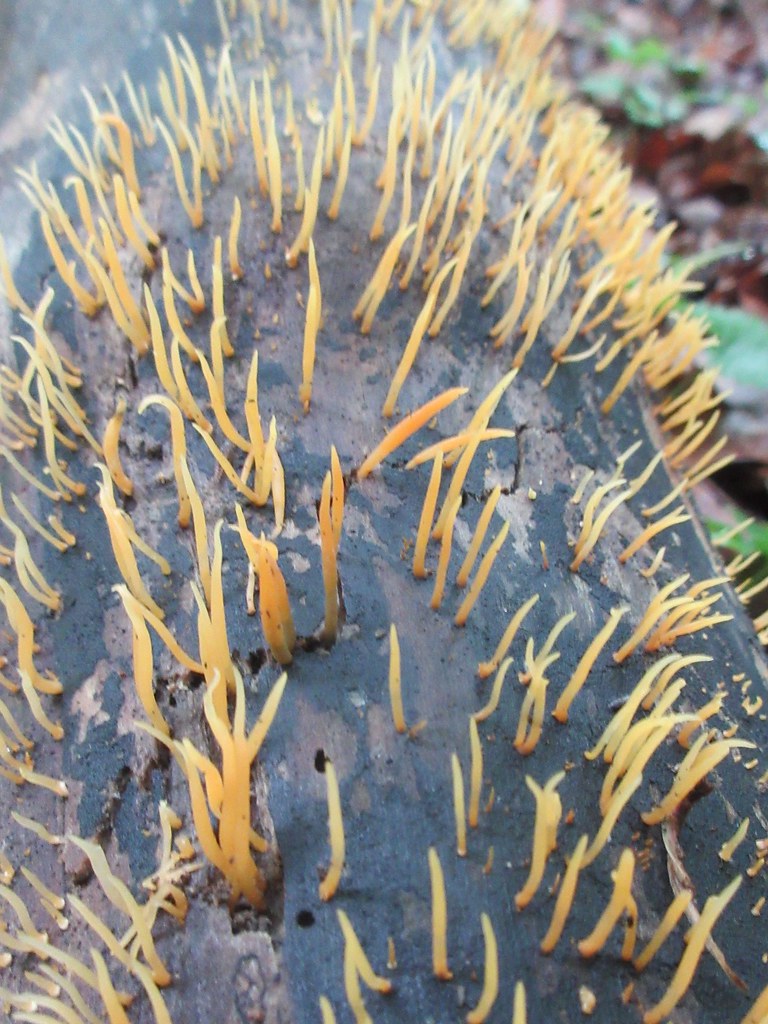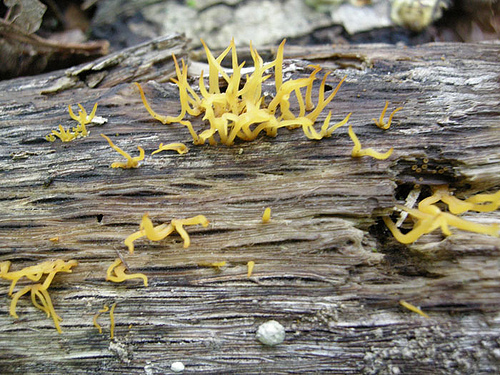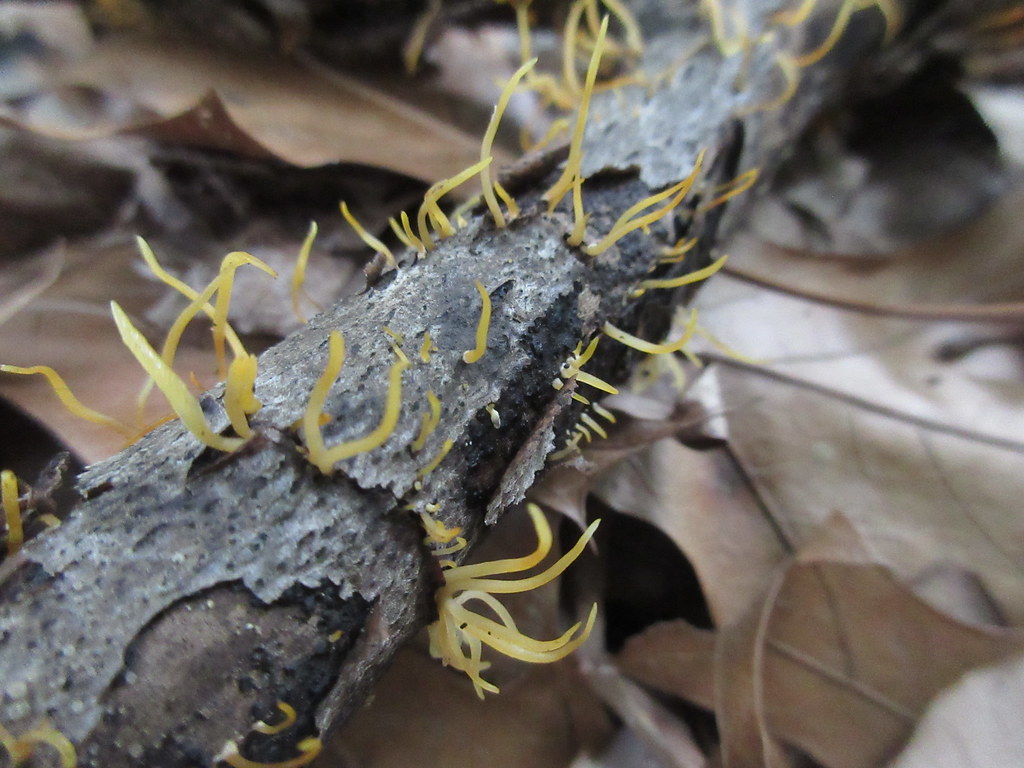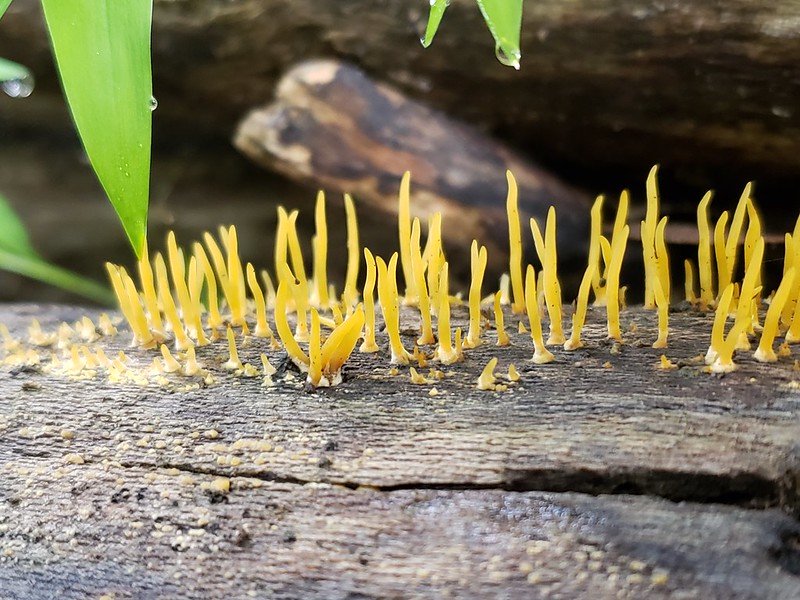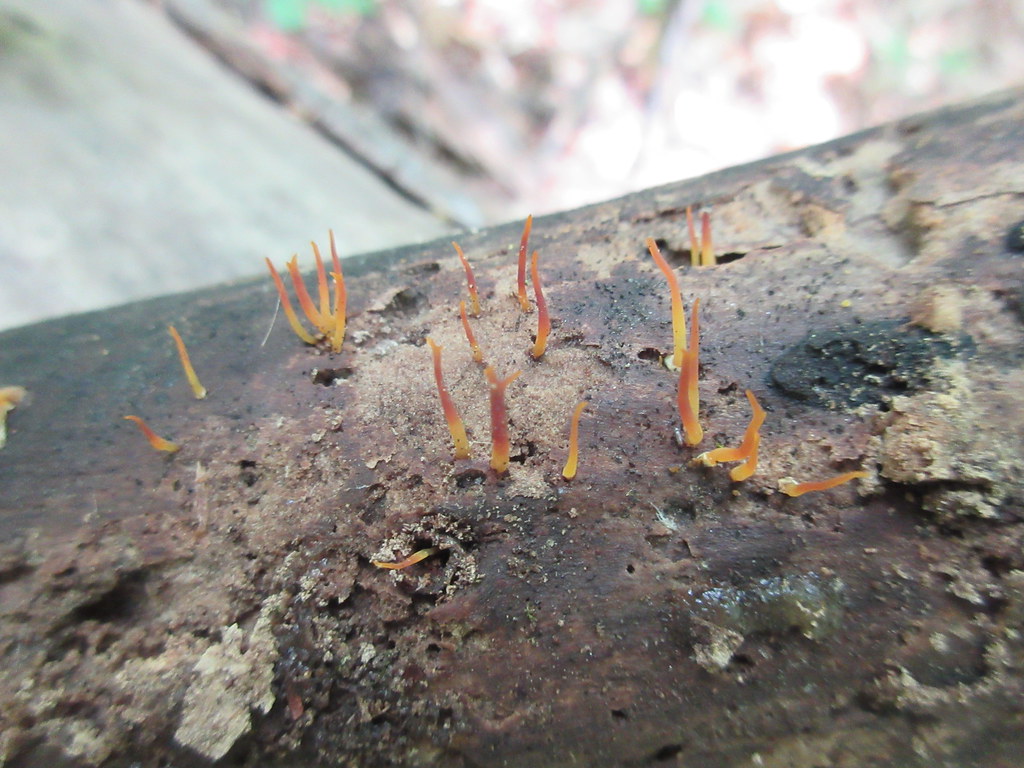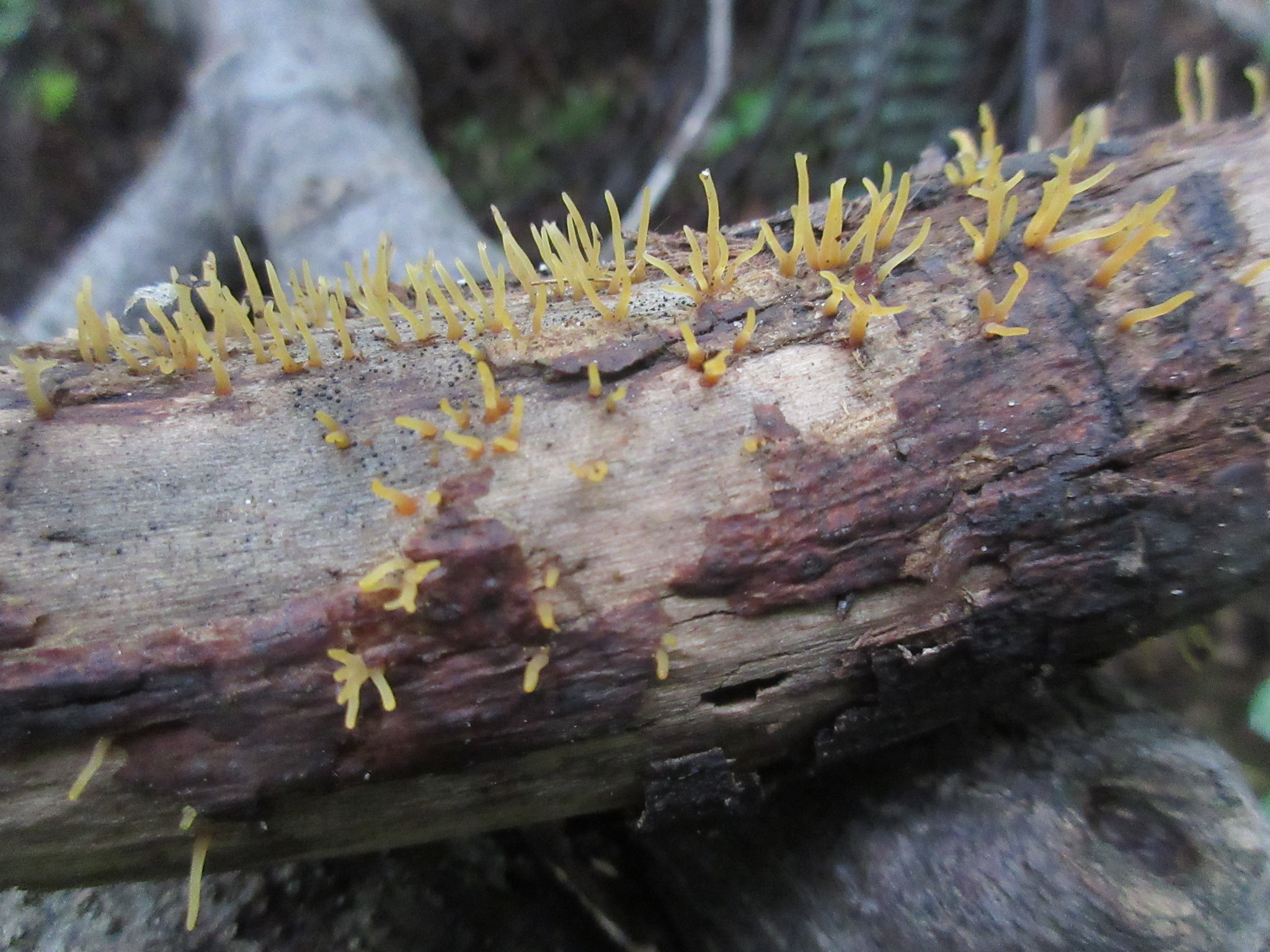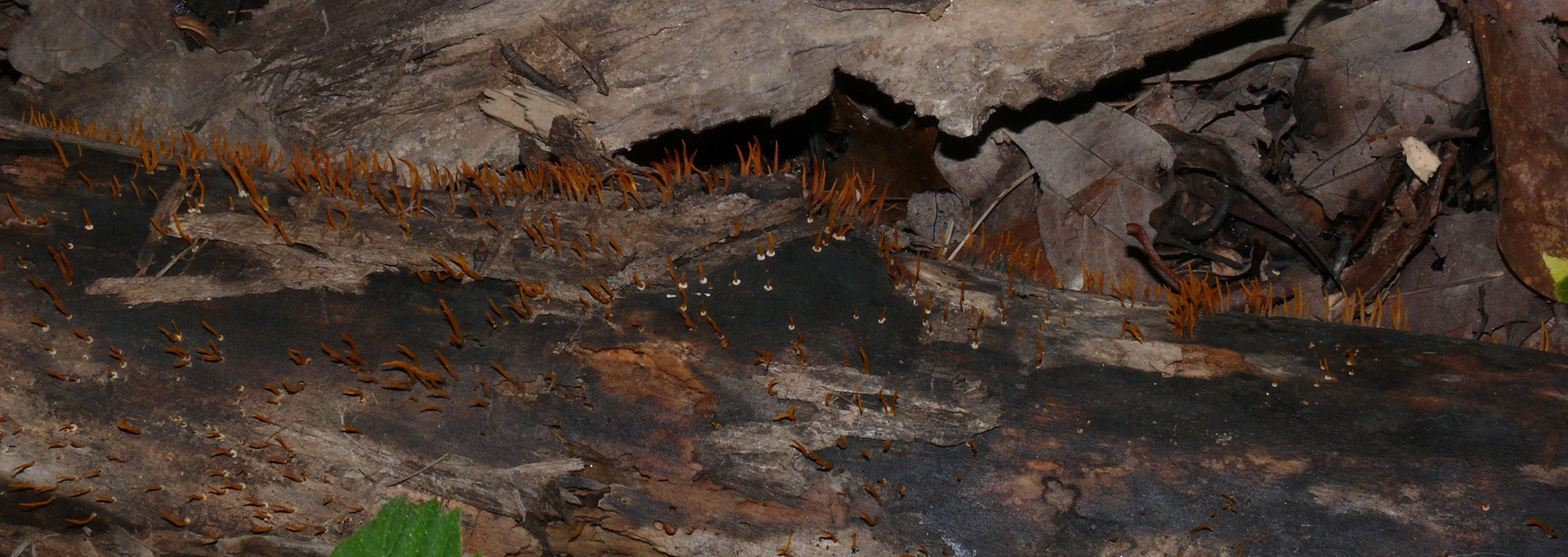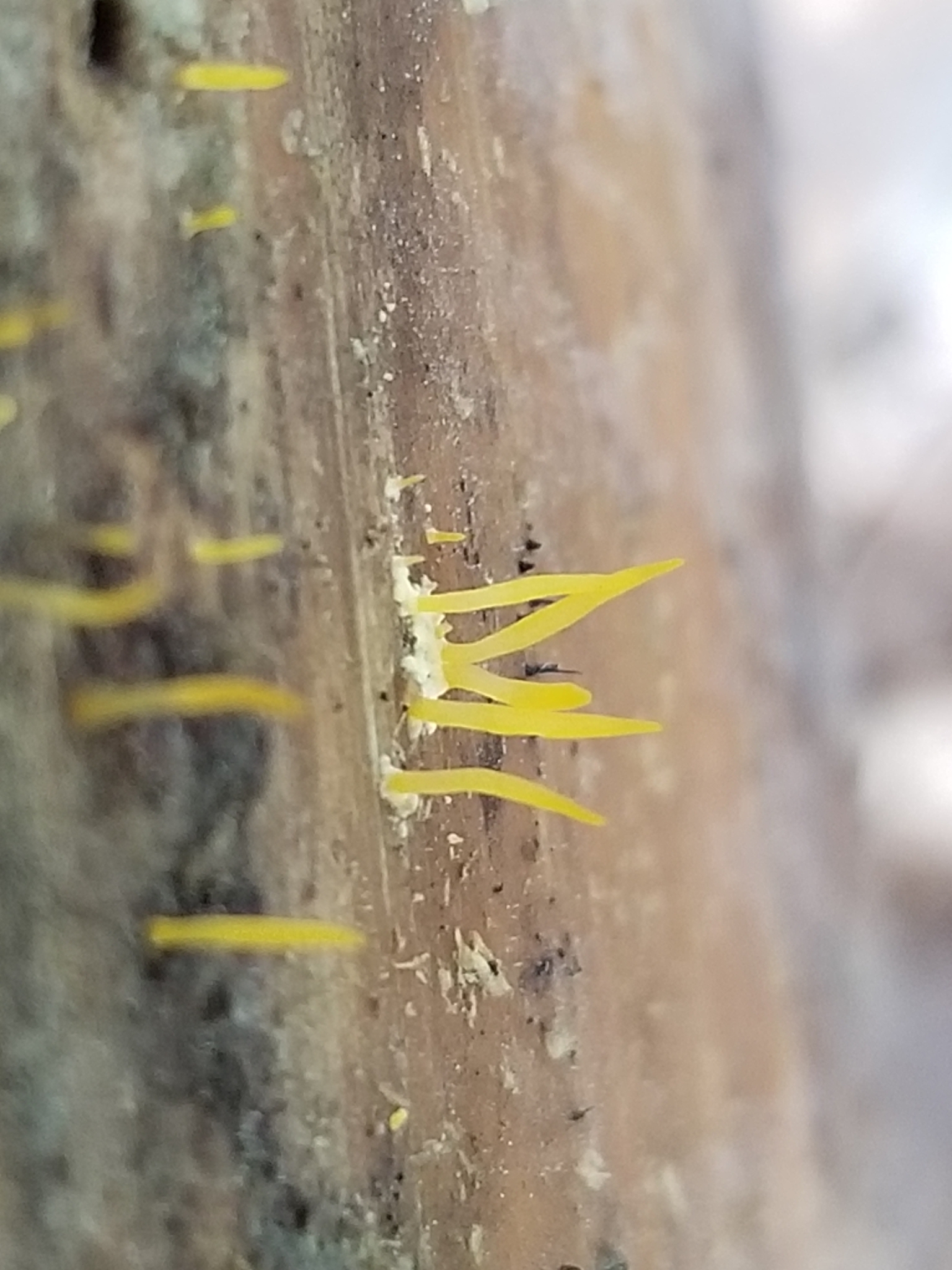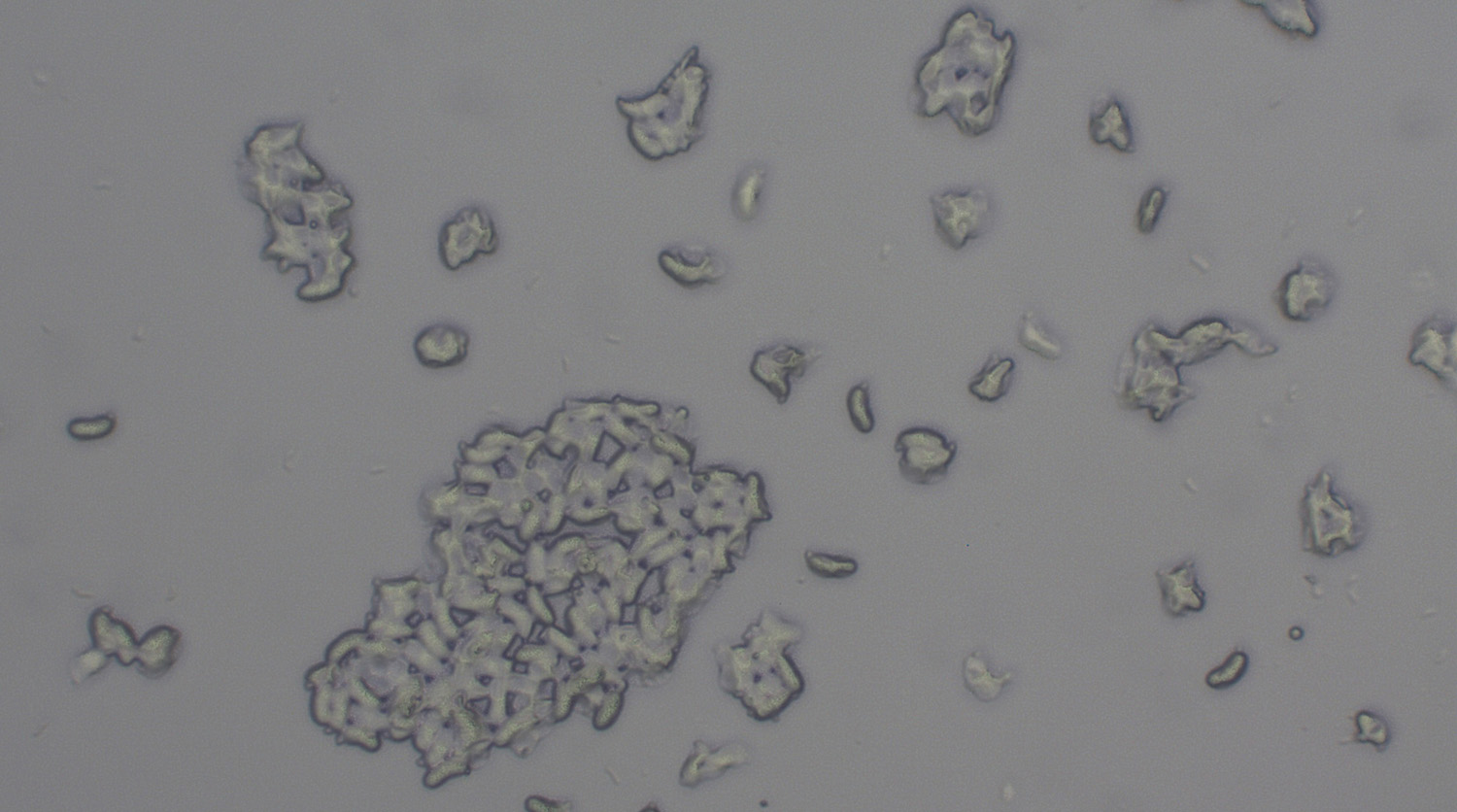Map Snapshot











64 Records
Status
Found in clusters or groups on decaying wood.
Description
Fruiting body: Yellow to orange; cylindric with round or pointed tips; tough, rubbery. (J. Solem, pers. comm.)
Seasonality Snapshot
Source: Wikipedia
| Calocera cornea | |
|---|---|

| |
| Scientific classification | |
| Domain: | Eukaryota |
| Kingdom: | Fungi |
| Division: | Basidiomycota |
| Class: | Dacrymycetes |
| Order: | Dacrymycetales |
| Family: | Dacrymycetaceae |
| Genus: | Calocera |
| Species: | C. cornea
|
| Binomial name | |
| Calocera cornea | |
| Synonyms | |
|
Clavaria cornea Batsch (1783) | |
| Calocera cornea | |
|---|---|
| Smooth hymenium | |
| No distinct cap | |
| Hymenium attachment is irregular or not applicable | |
| Stipe is bare | |
| Spore print is white | |
| Ecology is saprotrophic | |
| Edibility is inedible | |
Calocera cornea is a jelly fungus that grows on decaying wood.[1] It is a member of the Dacrymycetales, an order of fungi characterized by their unique "tuning fork" basidia.
Its yellow, finger-like, tapering basidiocarps are somewhat gelatinous in texture. In typical specimens the basidiocarps become up to 3 mm in diameter, and 2 cm in height. The hymenium covers the sides of the basidiocarps, each basidium producing and forcibly discharging only two basidiospores.
It is inedible.[2] Calocera viscosa is related.[1]
References
[edit]- ^ a b Trudell, Steve; Ammirati, Joe (2009). Mushrooms of the Pacific Northwest. Timber Press Field Guides. Portland, OR: Timber Press. pp. 237–238. ISBN 978-0-88192-935-5.
- ^ Miller Jr., Orson K.; Miller, Hope H. (2006). North American Mushrooms: A Field Guide to Edible and Inedible Fungi. Guilford, CN: FalconGuides. p. 496. ISBN 978-0-7627-3109-1.
Further reading
[edit]- C.J. Alexopolous, Charles W. Mims, M. Blackwell et al., Introductory Mycology, 4th ed. (John Wiley and Sons, Hoboken NJ, 2004) ISBN 0-471-52229-5
- McNabb R.F.R. 1965a. Taxonomic studies in the Dacrymycetaceae II. Calocera (Fries) Fries. New Zealand J. Bot. 3: 31–58.
External links
[edit]- Friday Fellow: Club-like Tuning Fork at Earthling Nature.
- Messiah.edu
